There is a definite connection between low oil cooking and weight loss. By reducing or eliminating the use of oil in cooking, individuals can significantly decrease their overall caloric intake. Since oil is calorie-dense, with approximately 120 calories per tablespoon, using less oil directly translates to consuming fewer calories. Additionally, low oil cooking encourages the adoption of healthier cooking methods such as steaming, baking, grilling, or stir-frying with minimal oil, which retain the natural flavors and nutrients of foods while minimizing added fats. This promotes portion control and mindful eating habits, which are crucial for weight management. Furthermore, low oil cooking supports heart health by reducing the intake of unhealthy fats, which can lead to cardiovascular diseases associated with obesity.
Table of Contents
What Do You Mean By Low Oil Cooking?
Low oil cooking refers to a culinary approach where minimal amounts of oil are used in food preparation or cooking methods that require little to no oil. In low oil cooking, the emphasis is on reducing the overall amount of added fats, particularly oils, without sacrificing flavor or texture. This can involve techniques such as using non-stick cookware, sautéing with water or broth instead of oil, oven-baking or roasting foods without oil, and incorporating ingredients that naturally release oils or moisture during cooking. The goal of low oil cooking is to create healthier and lighter meals by cutting down on excess calories and unhealthy fats, while still enjoying delicious and nutritious dishes.
Connection Between Low Oil Cooking And Weight Loss:
Here's a detailed explanation of the connection between low oil cooking and weight loss:
- Reduced Caloric Intake: Oil is a concentrated source of calories, with approximately 120 calories per tablespoon. By using less oil in cooking or opting for cooking methods that require little to no oil, you automatically reduce your overall caloric intake. This reduction in calories can create a calorie deficit, which is essential for weight loss.
- Lower Fat Content: Oil is high in fat, and while some fats are healthy in moderation, excessive fat intake can contribute to weight gain. Low oil cooking helps to lower the fat content of meals, making them lighter and less calorie-dense. This can facilitate weight loss by reducing the consumption of excess fats.
- Promotes Healthier Cooking Methods: When you cook with less oil, you're more likely to explore alternative cooking methods that don't rely heavily on added fats, such as steaming, baking, grilling, or stir-frying with minimal oil. These methods retain the natural flavors and nutrients of foods while minimizing the need for added fats.
- Enhanced Nutrient Absorption: While some vitamins and nutrients are fat-soluble and require fat for absorption, excessive fat intake can interfere with nutrient absorption and contribute to weight gain. By reducing oil intake to a moderate level, you strike a balance between facilitating nutrient absorption and minimizing excess calorie consumption.
- Encourages Portion Control: Using less oil in cooking can encourage portion control by making dishes feel lighter and less greasy. This can help prevent overeating and promote mindful eating habits, both of which are essential for successful weight management.
- Supports Heart Health: Many oils, especially those high in saturated and trans fats, can negatively impact heart health when consumed in excess. Low oil cooking promotes heart-healthy eating habits by reducing the intake of unhealthy fats, thereby lowering the risk of cardiovascular diseases associated with obesity.
- Fosters Sustainable Lifestyle Changes: Adopting a low oil cooking approach isn't just about temporary weight loss; it's about making sustainable lifestyle changes that promote overall health and well-being. By embracing healthier cooking habits, individuals are more likely to maintain their weight loss efforts in the long term.
Is Non-Stick Cookware Good For Low Oil Cooking?
Yes, non-stick cookware is excellent for low oil cooking. The non-stick coating on these pans allows food to release easily without sticking, reducing the need for added fats or oils during cooking. This makes it possible to achieve delicious results with minimal oil, promoting healthier cooking habits. Non-stick cookware is particularly useful for sautéing, frying, or baking foods with little to no oil, as the non-stick surface ensures even cooking and prevents food from sticking to the pan.
Using non-stick cookware for low oil cooking offers several benefits. It allows individuals to enjoy their favorite dishes with reduced fat content, making meals lighter and healthier overall. Additionally, non-stick pans are easy to clean, as food residue is less likely to adhere to the surface, minimizing the need for soaking or scrubbing with harsh cleaning agents.
Best Non-Stick Cookware For Low Oil Cooking:
Meyer offers a wide range of non-stick cookware that are highly regarded as perfect for low oil cooking. These cookware collections feature advanced non-stick technology that allows for effortless food release with minimal oil, making it perfect for low oil cooking. Here are some key features of the Meyer non-stick cookware:
Total Nonstick Surface: The cookware are coated with a durable non-stick coating that ensures food doesn't stick to the surface, reducing the need for added fats or oils during cooking.
Even Heat Distribution: The cookware are designed to distribute heat evenly across the surface, ensuring consistent cooking results without hot spots. This allows for efficient cooking with minimal oil.
Durable Construction: Meyer non-stick cookware are crafted from high-quality materials, such as hard-anodized aluminum or stainless steel, ensuring durability and longevity.
Easy to Clean: The non-stick surface makes these cookware easy to clean, requiring only a simple wipe with a soft sponge or cloth. This reduces the need for soaking or scrubbing, saving time and effort.
Versatility: Meyer non-stick cookware are versatile and can be used for a wide range of cooking techniques, from sautéing and frying to baking and roasting. This makes them suitable for a variety of low oil cooking methods.
Best Non-Stick Cookware in India:
Here are some of Meyer’s highly acclaimed non-stick cookware:
Bauhaus: This non-stick cookware range features a nonstick coating engineered to withstand a remarkable 25,000 scrubs (approx.), which is far beyond the capabilities of most nonstick options in the market. This exceptional durability ensures that your cookware remains in excellent condition, even with daily use. It's the perfect balance of longevity and nonstick convenience.
Circulon A1: This non-stick cookware range is fortified with ScratchDefense™ Technology, making it 130 times more durable than regular nonstick cookware. It's a long-term investment that promises to stand up to daily wear and tear.
Merlot: With the latest innovation in cookware - Ridged and Dimpled ‘Square-Dot’ pattern- this cookware range the smoothest food release and resistance against utensil abrasion.

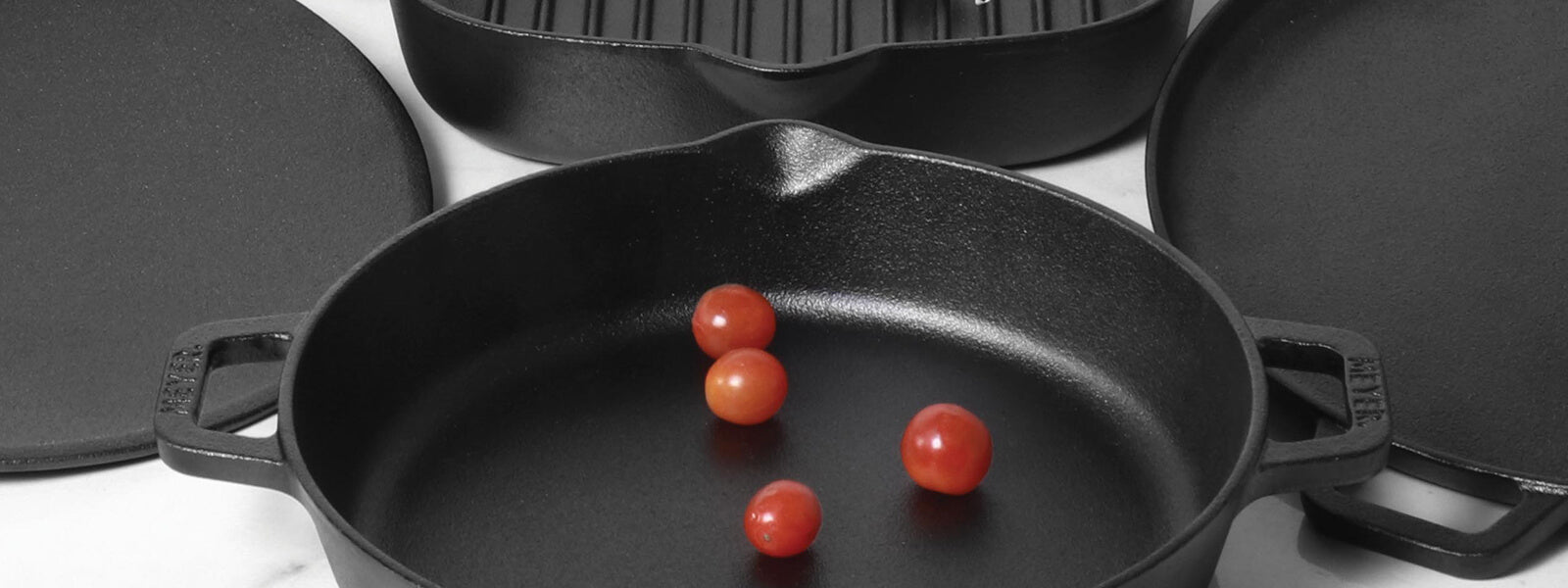
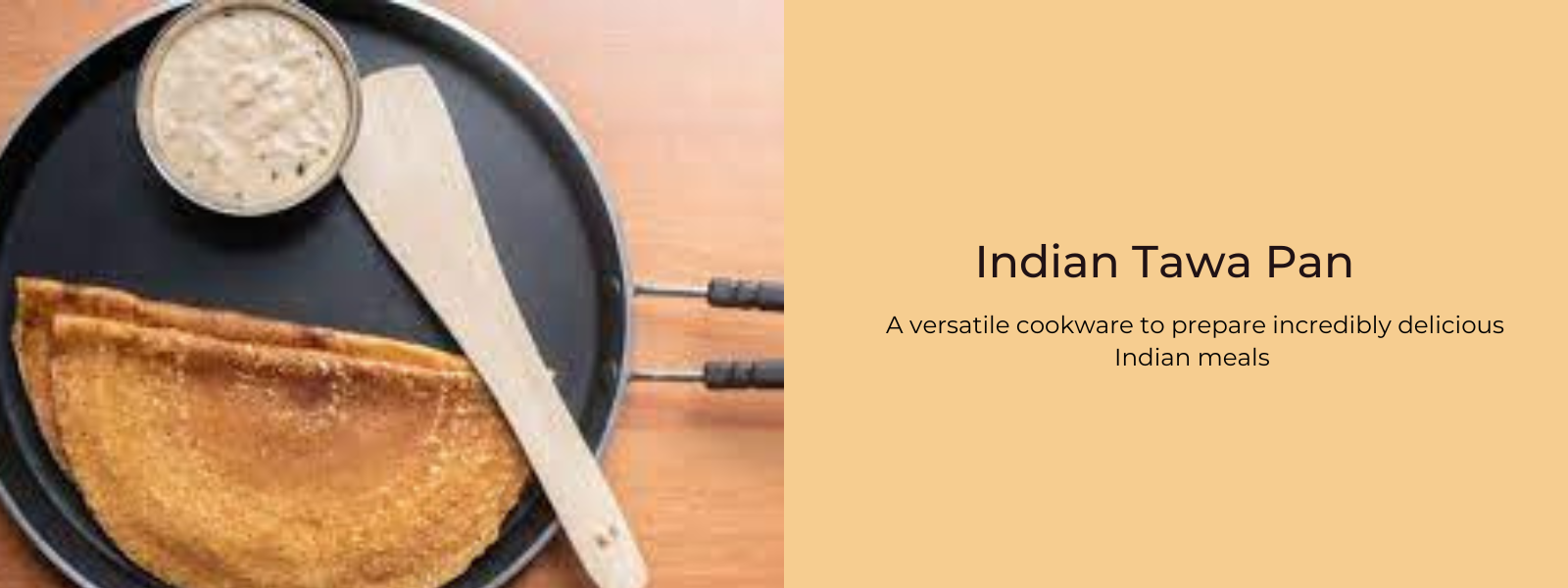
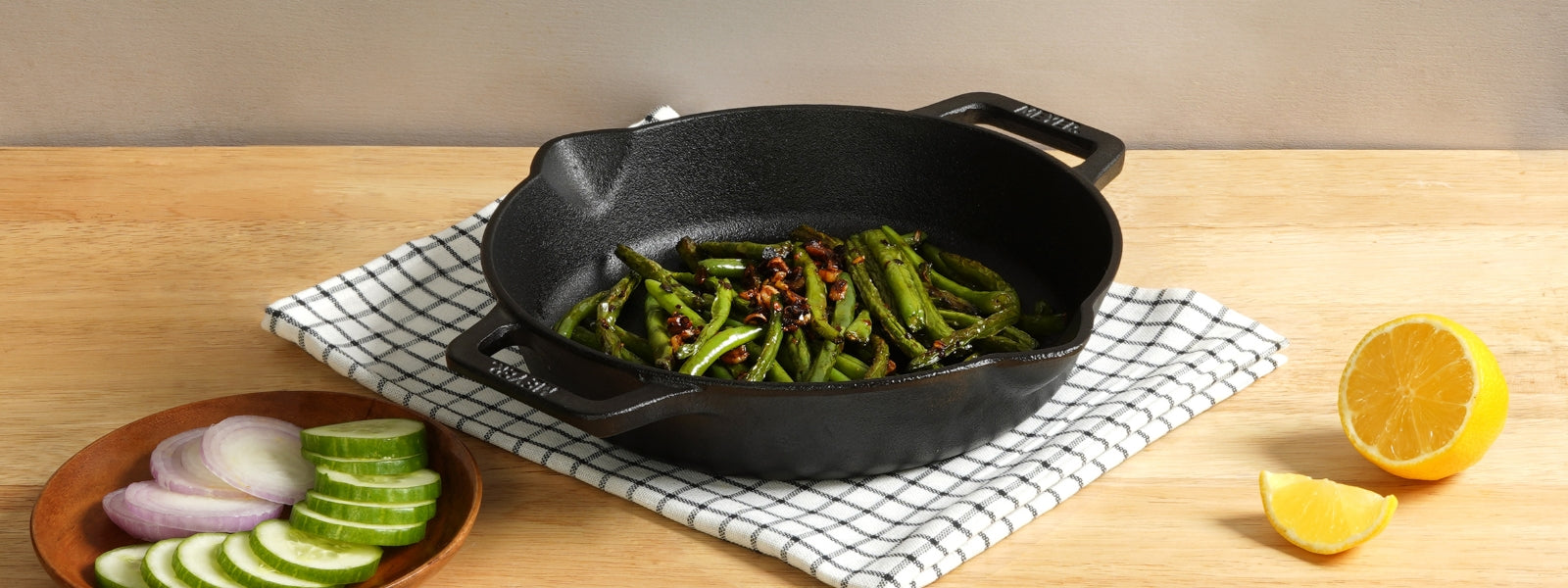

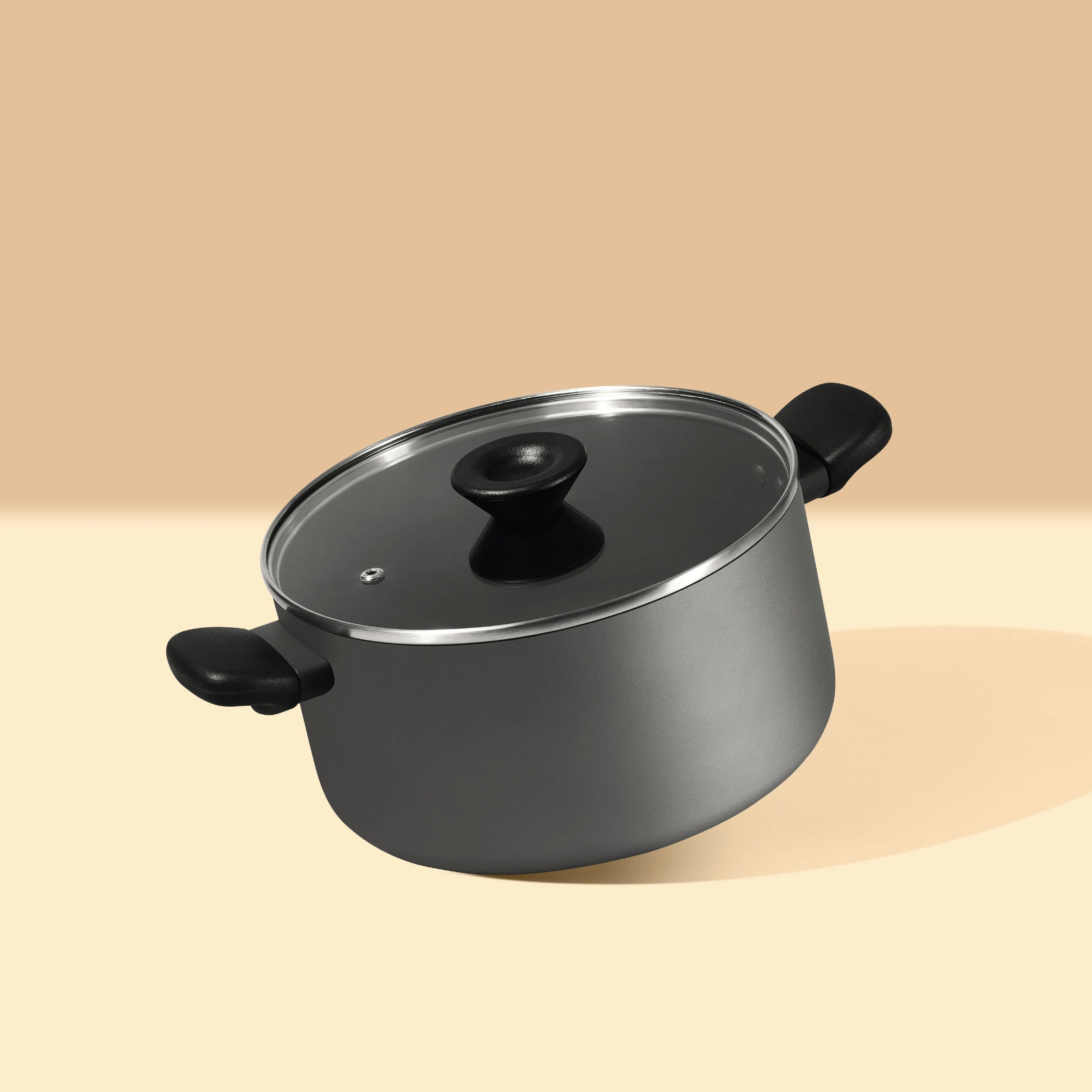
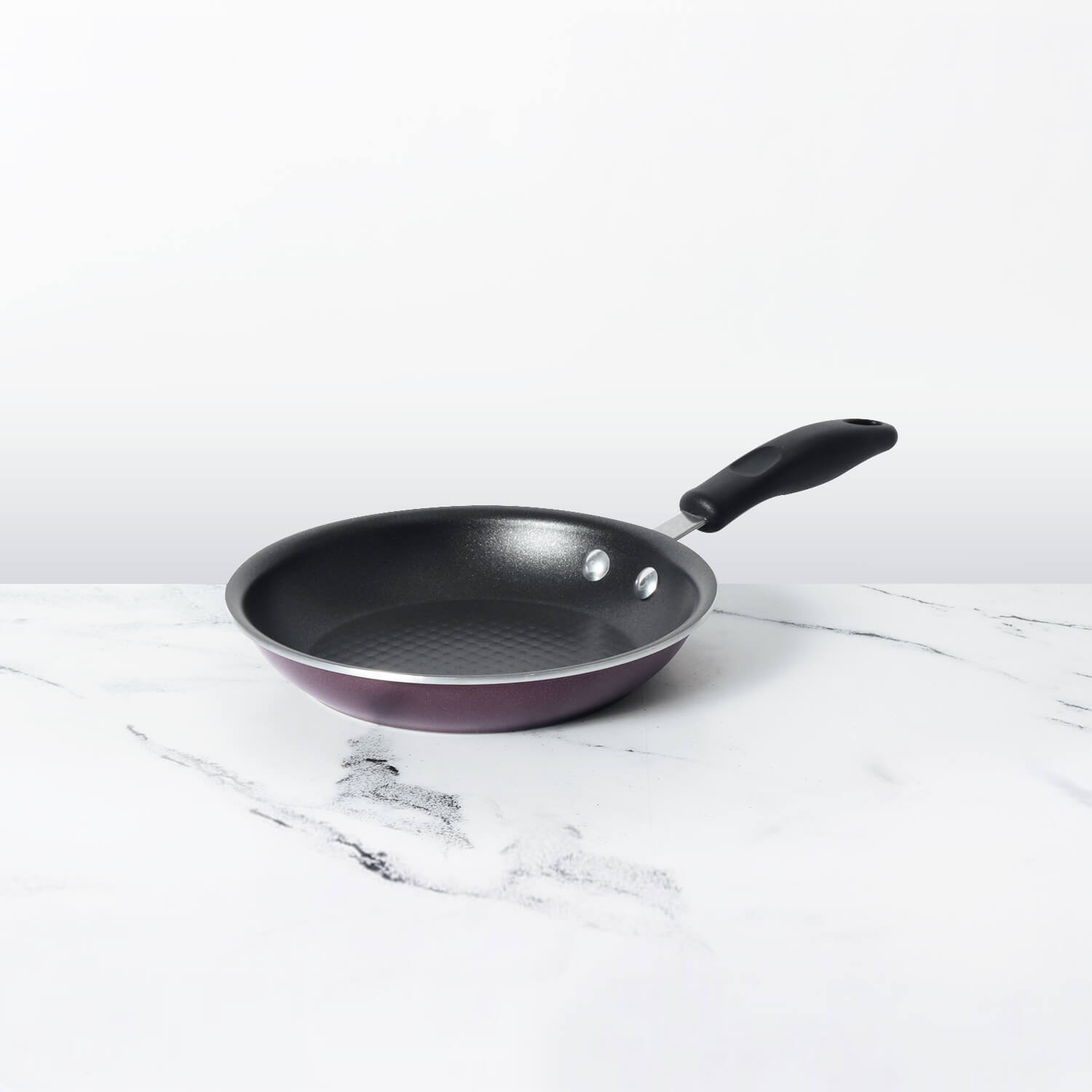




Leave a comment